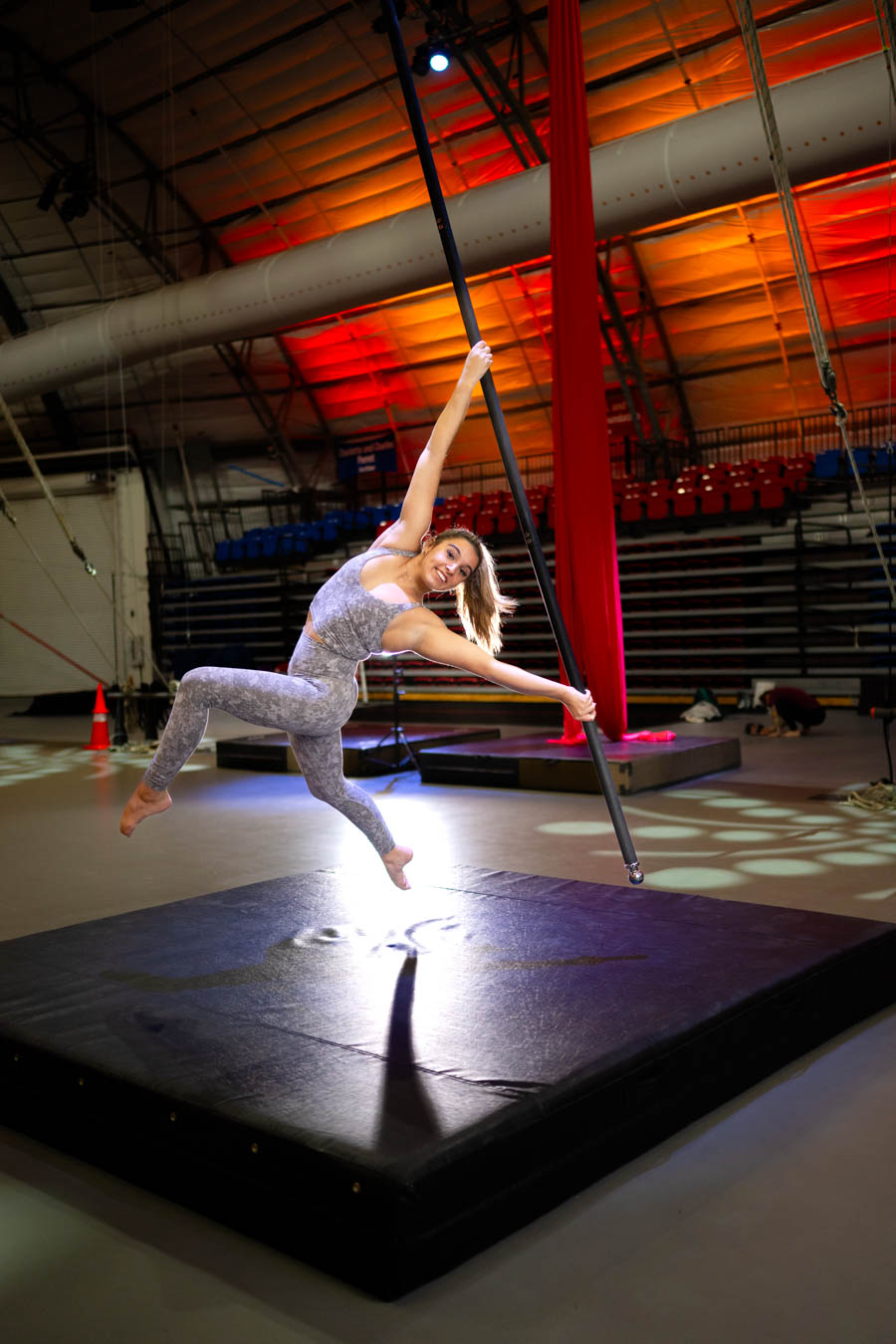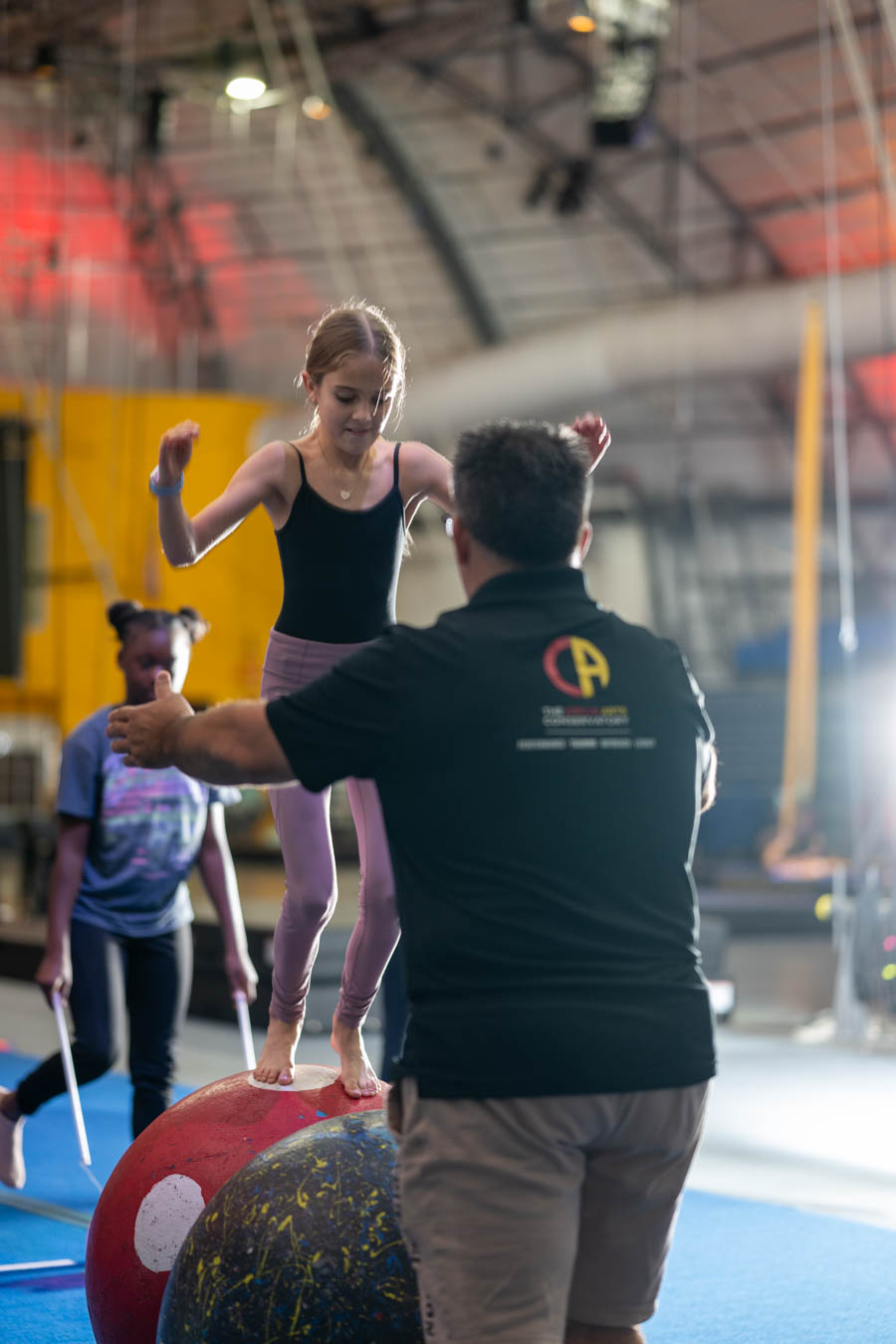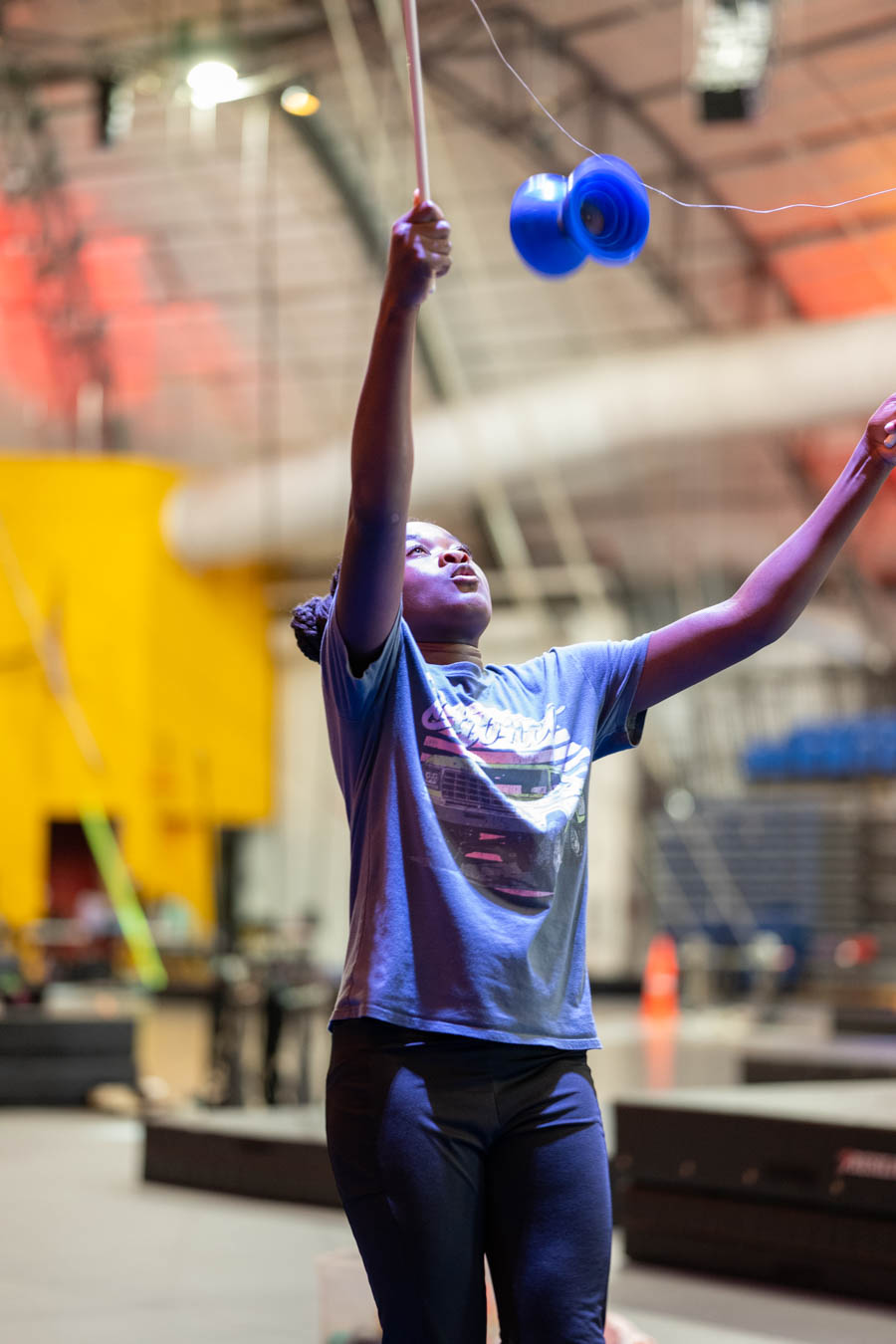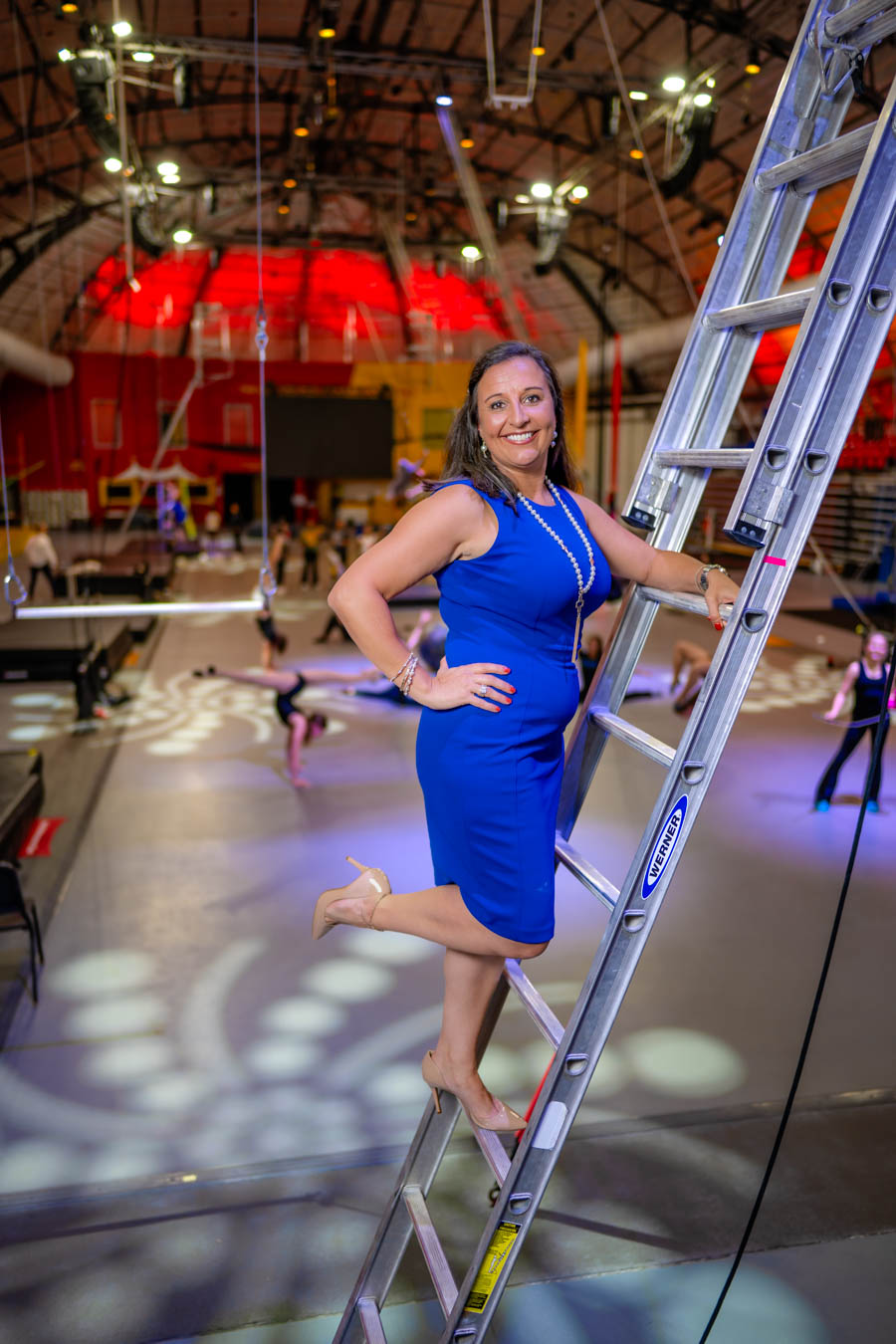One would be hard pressed to find a program more entrenched in the history of Sarasota than the Sailor Circus Academy. The program, now run by The Circus Arts Conservatory, is the nation’s oldest youth circus and originated in 1949 as an outlet for the uniquely skilled children of the Ringling circus performers. 73 years later, Sailor Circus has blossomed into a multi-tiered developmental program, focused on building not just the next generation of acrobats, but the next generation of arts patrons and sterling citizens as well. Executive Vice President/COO of the Conservatory Jennifer Mitchell sat down with SRQ Magazine to discuss how the organization melded the Sailor Circus program into what it is today.
Share with us the Sailor Circus Program and its history? JENNIFER MITCHELL: Well, it is going to be celebrating its 75th anniversary next year in 2024. The Sailor Circus program originated in 1949 as part of Sarasota High School’s gymnastics program. In the ‘40s there were so many Ringling families and performers that were homesteading here in Sarasota, with children that were going to normal school but had extraordinary talents that were different from your run-of-the-mill football or baseball player. It became obvious at that point in time to the school that they could develop a very unique program.
Sailor Circus is the longest running youth program in the country, and they had that program for a number of years running under the auspices of Sarasota High School and the school board. At some point in early ‘90s, they had an alumni show for alumni performers who had been involved in the Sailor Circus as youth and there was an injury during that show. Afterwards, the school board said this is just really not something that we can sustain. They didn’t really see how the school board could really intersect and decided to stop funding the program. In response to that, another nonprofit organization, the Police Athletic League, didn’t want to see this amazing program just fall to the wind and picked up stewardship of the Sailor Circus for a number of years. I like to call it the gap years because those were the years where it was not obviously being funded by the school board, and it was not being run really by an organization that had the time, the talent, the funding and the resources to keep Sailor Circus operating at the optimal level that it should be.
So around 2010/2011, we were approached by the Police Athletic League and the Sheriff’s office to discuss potentially taking over the Sailor Circus program. For me, it felt like a no-brainer as an executive for the company. It just was like, wow, this is the right thing to do for Sailor Circus. And it had always been within our mission and within our vision to either operate or open a circus school–youth education really has become a primary pillar for the Circus Arts Conservatory. That’s when the Circus Arts Conservatory was birthed as the umbrella of all our programs, with Circus Sarasota as the professional arm, and then of course the Sailor Circus Academy, which all our educational programs and youth training would fall under. In that first year, we had about 100 kids in the Sailor Circus Academy and launched a summer program in tandem with the Academy. We were so excited. Today, we have over 1,000 kids who participate in our camp program and another 200 who perform year round with us in our academy programs.
Were there any challenges or headwinds that you ran into first when you took on the Sailor Circus program? First of all, we took on a program that was financially in arrears. The training facility was dilapidated and needed a lot of updates. Programmatically we needed to have and have since instilled a lot of new policies, procedures and training curriculum to enhance the actual program itself. The first thing we did was take a look at the fiscal situation of the academy and develop ancillary programs that could help support it. I think one of the real benefits of already being a bona fide nonprofit in town was that we were able to bring funding resources to this amazing program of the Sailor Circus. We launched a capital campaign that we completed in 2019, which was a $5 million dollar full renovation of the arena space that brought air conditioning and climate control to the building, new audio-visual equipment, retractable seating and a performance safety floor. Since then we’ve invested another half million dollars into staging equipment, new training equipment, new coaches and human resources to keep advancing our programming.

Why is it called Sailor Circus? It’s called Sailor Circus because the program originated as part of Sarasota High School and their mascot is the Sailor. I actually found out from one of the high school historians that they are called the Sailors because before we had the Skyway Bridge, the football team used to sail across Tampa Bay and play the Tampa High School Buccaneers.
You mentioned there are ancillary programs that you developed in that time span of building Sailor Circus to what it is today. What were some of those programs? With trial and error, we really started a lot of different things. We started the summer camp program, one that has really grown and is flourishing and is so engaging for young kids. We started a pre-performance, pre-professional program where students who have gone through the Sailor Circus and are career driven into the performing arts, can train with us at a higher level. We work with them for one to two years after they’ve graduated to help them really launch that professional career within the circus industry or within the entertainment industry. People ask me all the time about what graduates can do beyond being a circus artist. We’ve had students that have gone on to become stunt doubles in Hollywood or stunt doubles for movies or gone on to be television commentators. We have more recently developed a robust group of education programs, and those are our circus science machine program where students in the fifth grade are learning Newton’s laws. We use students of the Sailor Circus to perform so that we can sometimes show how these really difficult concepts like force, acceleration and gravity can be explained and articulated and learned through the circus arts. We have also launched a program in collaboration with Booker Middle School. Students from Booker Middle School will come here and take one period a day in the circus/circus arts. And then four, almost five years ago, we launched the nation’s first and still the only accredited high school circus program (magnet). Instead of taking traditional electives, students in Sarasota High School have the opportunity to become part of our magnet program, where they take two periods a day earning credit hours and studying within the circus arts.
How important was it for you to do outreach and education? Very important. I think that leadership here believes that we are helping to develop our next generation arts patron, our next generation volunteer, the next generation of educators. We also believe that the circus arts has a very strong platform in helping young people form 21st century skills that they need, whether they go on to perform or not–they are still building their self-confidence and their ability to communicate and work as a team.

What skills are the kids building outside of their ability to perform as circus artists? Particularly for me as an employer, I find it important to look at not just what does your resume say in terms of where you’ve graduated, but what did you really learn within those institutions or within your different job experiences? I find it so rewarding to hear that alumni will oftentimes say that they used their time in the circus as one of their main talking points in a job interview.
For example, there was a young man that graduated a number of years ago from Sailor Circus. He went on to work with Nik Wallenda in a seven person pyramid professionally while also going to college, where he was studying medicine. Two years ago he was interviewed at Shands in Gainesville, which is one of the high level medical facilities here in Florida, where he is now a trauma emergency nurse.
In his interview, they asked him several questions about performing under pressure, about changing environments, about what it’s like to be part of a team and be a part of something bigger than just yourself in your job. And he was able to correlate all of those things to his work and his studies and training in the circus because he was part of a flying trapeze team. If you’re not communicating with your catcher, you cannot execute a trick well. That same philosophy comes into play when you’re assisting the surgeon in a surgical room. It’s this idea that you know your role and be part of a team, while also being adaptable and able to work on the fly.
As a mom, has it given you a different perspective to the program? Certainly. I think not only has it personally helped me to invest more of my own time and talent into our youth programs, but it has also given me a perspective on what all the students have the potential for. I would also say that the students are lucky, because Emma’s always advocating for the kids in my ear, trying to make sure that the program can be the best that it can be while also knowing the reality is that 99% of the kids won’t go on to be a professional circus artist. We don’t expect that we’re pumping out hundreds of skilled professional circus artists, but we know that the skills that they’re taking are going to really help them in whatever career path they choose. However, we still want the program to be at the top level so that if a student does desire to go out and work within the circus industry, they have gained enough training here to do so. There are a lot of professional circuses. There are a lot of really great circus schools, but we are the only one in the country that combines producing a professional circus, while also mentoring and stewarding a youth school.
As someone who’s had a daughter go through the program and then shepherded this program to where it is today, could you share any specific memories that encapsulate how it’s grown? Good question. Well, I can just say personally that my Emma is one of the first that we refer to as a graduate of our program that’s gone on to be professional. She is performing this summer with Nik Wallenda as the aerialist, the solo aerialist in his show. And I’m so proud not just of her and her perseverance, but of our entire team because I think that it really shows that if we are moving our programs forward the way we had intended, these are the results. Sarasota is full of great youth programs and all my kids have been involved in a lot of other programs, but for her, she didn’t quite find the fit until she got into the circus. None of my other kids are actually involved in the circus. But for Emma, it definitely made her heart beat.
I’m proud that through Emma’s challenges, we as a company have grown. For example, she had a very serious knee injury. We traveled all over Colorado and Florida, trying to find specialists. We learned that she was hypermobile and I wanted to understand, well, what does that mean for her training regimen and what does that mean for other kids that are hypermobile here within Circus? We learned a lot and we learned which kids need to work specifically on joint strengthening and we’ve infused that into the program. And some of the kids ask, “why are we doing this now?” Well, we’re doing it now because we learned something. I’m so grateful that the journey wasn’t just about me.

What does the future hold for the Sailor Circus program? We’re also looking at how technology can be infused within our performing art. You’re seeing now in Europe, some of the circuses who don’t want to actually showcase animals anymore will do hologram elephants. So we’re continuing to look at how we’re producing the art form and how we’re training in the art form and evolving. One of the big ways that we’re implementing that within the Sailor Circus Academy is by taking a deeper look into the biomechanics of the body. We’re hiring circus trainers who are also physical therapists or who have also studied within kinesiology or biology so that they have a really good understanding of strength and conditioning programs and the different types of mobility. We’re trying to evolve in that area instead of just saying, ‘hey let’s just try and do that exercise’. We’ve really executed some new policies and procedures on how we get students to, let’s say, gain their split. I look to liken it to what IMG is doing as an academy with their athletes. In some cases we’re talking to students about their diet plans. Are they hydrating enough? It’s not just going out there and doing it, but maintaining their bodies for consistency and longevity.









